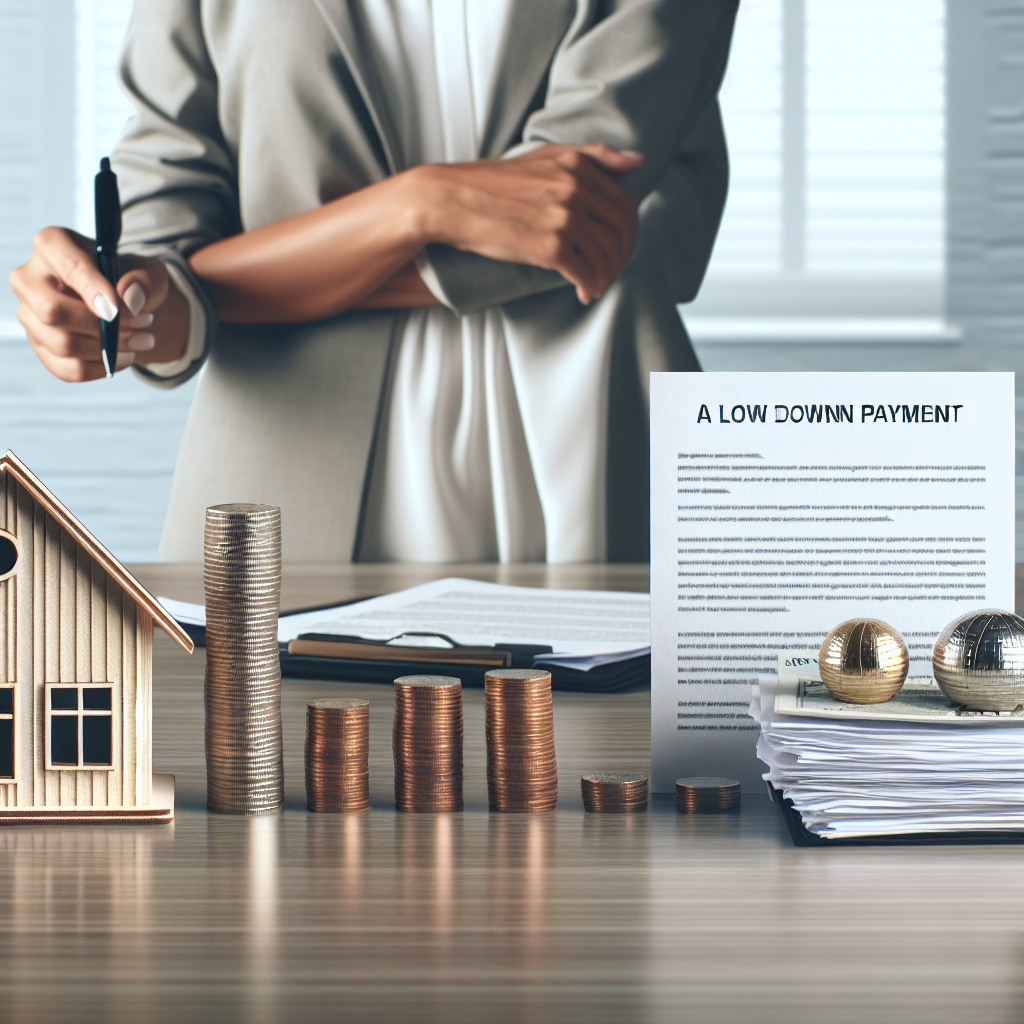
Low down payment mortgage
Understanding Low Down Payment Mortgages
Buying a home is one of the most significant financial decisions an individual can make. Traditionally, one of the main barriers to homeownership has been the requirement for a hefty down payment. Fortunately, there are options available that allow prospective homebuyers to purchase a home with a smaller initial investment - these are known as low down payment mortgages. In this article, we'll explore what low down payment mortgages are, the various types available, their benefits, and tips for securing one.
What is a Low Down Payment Mortgage?
A low down payment mortgage is a home loan that allows buyers to purchase a property without needing to provide a large down payment. Typically, conventional loans may require down payments ranging from 5% to 20% of the home’s purchase price. However, low down payment options reduce this threshold significantly, enabling first-time homebuyers and those with limited savings to enter the housing market.
Types of Low Down Payment Mortgages
- FHA Loans: Backed by the Federal Housing Administration, FHA loans allow for down payments as low as 3.5%. These loans cater to buyers with lower credit scores and are ideal for first-time homebuyers.
- VA Loans: Available to veterans, active-duty service members, and eligible surviving spouses, VA loans offer the significant advantage of no down payment requirement along with competitive interest rates.
- USDA Loans: Designed for rural and suburban homebuyers who meet specific income criteria, USDA loans can also allow for 0% down payment, making them an attractive option for those looking to purchase in eligible areas.
- Conventional Loans: Some conventional loans offer low down payment options, typically ranging from 3% to 5%, provided that borrowers meet certain credit and income requirements.
Benefits of Low Down Payment Mortgages
Choosing a low down payment mortgage comes with a variety of advantages:
- Accessibility: Low down payment options make homeownership attainable for those without substantial savings.
- Liquidity: Buyers can retain savings for emergencies or other investments instead of tying them up in a large down payment.
- Market Participation: With lower barriers to entry, more individuals can participate in the real estate market, fostering greater homeownership rates.
Potential Downsides
While low down payment mortgages provide numerous benefits, there are some potential downsides to consider:
- Private Mortgage Insurance (PMI): Many low down payment mortgages require PMI, which protects the lender in case of default. This insurance can add to monthly payments.
- Higher Interest Rates: A smaller down payment may lead to a higher interest rate, impacting the total cost of the loan over time.
- Equity Building: With a lower initial investment, it may take longer to build equity in the home compared to traditional loans with larger down payments.
How to Qualify for a Low Down Payment Mortgage
Qualifying for a low down payment mortgage will typically involve meeting specific criteria set by the lender. Below are the common requirements:
- Credit Score: Lenders will review your credit score, which may need to meet a minimum threshold depending on the loan type. FHA loans may allow credit scores as low as 580, whereas conventional loans often require a score of 620 or higher.
- Debt-to-Income Ratio: Typically, a debt-to-income ratio (DTI) of 43% or lower is desirable. This ratio compares your monthly debt obligations to your gross monthly income.
- Employment History: Lenders often look for consistent employment history. Two years of steady employment in the same field is usually favorable.
- Down Payment Funds: You will need to demonstrate that you have the required down payment funds available, whether through savings, gifts, or other loan programs.
Tips for Securing a Low Down Payment Mortgage
If you’re considering a low down payment mortgage, here are some tips to help you through the process:
- Shop Around: Different lenders may offer varying terms and rates. It’s essential to compare offers to find the best fit for your situation.
- Get Pre-Approved: Speaking with lenders to obtain pre-approval can provide you with a clear picture of your budget and strengthen your position when making an offer on a home.
- Consider Your Total Costs: Look beyond the monthly mortgage payment; factor in property taxes, PMI, homeowner’s insurance, and maintenance costs.
- Stay Informed: Familiarize yourself with market conditions and financing options. Staying informed can help you make better decisions.
Finding the Right Home
Once you are pre-approved and understand your financing options, the next step is finding the right home. Here are some considerations to keep in mind:
- Your Needs: Determine your must-haves versus your wants to narrow down your options. Consider the number of bedrooms, location, and amenities.
- Future Growth: Think about not only your current needs but also your plans for the future. Will the home meet your needs in five or ten years?
- Inspection: Always have a professional home inspection done. This can unveil potential issues that may need to be addressed before finalizing the purchase.
Conclusion
In summary, a low down payment mortgage can be a key stepping stone for many seeking to enter homeownership. While they bring greater accessibility to real estate, potential borrowers should weigh the pros and cons to ensure an informed decision. Understanding the types of loans available, how to qualify, and tips for making the home-buying process smoother can empower you to take that important first step.
“Owning a home is a keystone of wealth... both financial affluence and emotional security.” - Suze Orman
As you embark on your journey to homeownership, remember that planning and preparation are your best allies. With the right approach, you'll be well on your way to finding the perfect place to call home.
By Guest, Published on September 16th, 2024